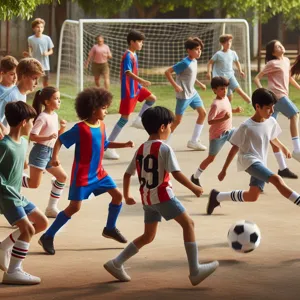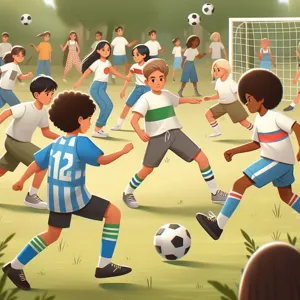In the fast-paced world of tennis, mastering your return shots can make all the difference between victory and defeat.
Among the many techniques that can elevate your game, the drop volley stands out as a powerful weapon in your arsenal. This delicate yet strategic shot combines finesse and precision, allowing you to control the pace of the match while keeping your opponent on their toes. Whether you’re a seasoned player looking to refine your skills or a beginner eager to learn the ropes, understanding the nuances of the drop volley is essential. In this blog post, we’ll explore the top techniques for perfecting your returns, breaking down the mechanics of the drop volley, and providing tips to help you execute this shot with confidence and style. Get ready to enhance your gameplay and impress your friends with your newfound expertise on the court!
1. Understanding the Drop Volley: Definition and Importance

The drop volley is a strategic shot in tennis that combines finesse with tactical precision. Unlike a standard volley, which often relies on power and aggression, the drop volley requires a delicate touch and keen awareness of your opponent’s positioning. Defined as a soft, controlled shot that lands just over the net, this technique is designed to catch your opponent off guard, often forcing them to scramble forward, which can lead to an easy point for you.
Understanding the drop volley’s importance in your overall game is essential for any aspiring player. It serves as a powerful tool for disrupting your opponent’s rhythm and capitalizing on their weaknesses, especially when they are positioned deep behind the baseline. By mastering this shot, you can effectively change the pace of a rally, creating opportunities to dictate play and dominate the net.
Moreover, the drop volley is not just about the execution of the shot itself; it requires keen observation and anticipation of your opponent’s movements. It’s an art that thrives on timing and placement, making it an invaluable addition to your tactical arsenal. When utilized correctly, the drop volley can shift the momentum of a match, giving you the upper hand in crucial moments. As you delve into the intricacies of this technique, you will discover how it can enhance your gameplay and contribute to your overall success on the court.
2. The Key Differences Between Drop Volley and Other Volley Types
When it comes to mastering your tennis game, understanding the nuances of different volley types is crucial, especially the drop volley. While all volleys share the fundamental purpose of returning the ball quickly and effectively, the drop volley possesses unique characteristics that set it apart from its more aggressive counterparts.
**Speed and Touch**
The drop volley is all about finesse rather than power. Unlike a standard volley, which often requires an explosive stroke to drive the ball deep into your opponent’s court, the drop volley relies on soft hands and delicate touch. This technique involves a gentle tap that sends the ball just over the net, making it imperative to read your opponent’s position and anticipate their movement. The goal is to catch them off guard, forcing them to rush forward in an attempt to retrieve a ball that seems almost effortless to hit.
**Court Positioning and Timing**
Another distinguishing factor is the court positioning required for a drop volley. Typically executed when you’re closer to the net, this shot requires exceptional timing and awareness. While a traditional volley can be hit from various positions on the court, the drop volley demands that you be in the right place at the right time to capitalize on your opponent’s weak shot. You’ll want to gauge the trajectory of the incoming ball and strike it at the optimal height to achieve that perfect drop.
**Mental Approach**
The drop volley also demands a different mental approach. While players may feel the pressure to dominate the point with a powerful shot, the drop volley encourages a more strategic mindset. It involves patience and the ability to stay calm under pressure, as well as a keen understanding of your opponent’s tendencies. The drop volley is a calculated risk; it requires you to anticipate not just your shot, but also how your opponent is likely to respond.
In summary, while all volleys serve the purpose of returning the ball quickly, the drop volley’s emphasis on touch, precision, and strategic positioning makes it a compelling addition to your skill set. By understanding these key differences, you can effectively integrate the drop volley into your game, keeping your opponents guessing and elevating your overall performance on the court.
3. Essential Grip Techniques for the Drop Volley

Mastering the drop volley in tennis requires more than just timing and positioning; it starts with the right grip. The grip you choose can significantly impact your control, spin, and power, making it essential to understand which techniques work best for this delicate shot.
### The Continental Grip
To execute a perfect drop volley, many players opt for the continental grip. This grip is versatile and allows for a smooth transition between various shots, making it ideal for net play. To achieve this grip, hold the racket as if you were shaking hands with it, placing the base knuckle of your index finger on the second bevel of the racket handle. This position not only provides stability but also enables you to slice under the ball, imparting the necessary backspin for a successful drop volley.
### The Eastern Grip
Some players prefer the eastern grip, especially if they are more accustomed to hitting groundstrokes with this technique. To adopt the eastern grip, place the base knuckle of your index finger on the third bevel of the racket. While this grip can lend itself to greater control and a more natural feel for the ball, it may require a bit more wrist action to execute an effective drop volley. This grip can be particularly beneficial when you want to hit with a little more top spin or when you need to adjust quickly to an incoming ball.
### Finger Positioning
Regardless of the grip you choose, pay close attention to your finger positioning. The fingers of your non-dominant hand should remain relaxed and slightly spread to aid in control and stability. Tension in your grip can lead to mishits or a lack of finesse, which are detrimental to successfully executing a drop volley. Practice maintaining a light grip during drills, as this will translate into better touch when it counts during match play.
### Practicing Grip Transitions
As you develop your drop volley skills, incorporate drills that emphasize grip transitions. For example, practice switching between the continental and eastern grips while at the net. This will help you become more adaptable based on the incoming ball’s trajectory and spin, allowing you to respond effectively and maintain an offensive position.
By honing your grip techniques for the drop volley, you’ll enhance your ability to place the ball precisely and with the finesse needed to leave your opponent scrambling. Remember, the right grip is not just about comfort; it’s the foundation of your technique, ensuring that your drop volleys are both effective and a joy to execute.
4. Footwork Fundamentals for Effective Positioning
Footwork is the unsung hero of a successful drop volley, and mastering it can elevate your game to new heights. The ability to position yourself effectively is crucial when it comes to executing a flawless return. Start by maintaining a balanced stance; your feet should be shoulder-width apart, with your weight slightly forward. This posture allows for quick movements in any direction, enabling you to respond rapidly to your opponent’s shots.
As the ball approaches, your first instinct should be to move swiftly toward it. Utilize small, quick steps—often referred to as “shuffling”—to adjust your position rather than large, cumbersome strides. This technique not only enhances your agility on the court but also keeps you grounded, ready to spring into action. Pay attention to your foot placement; ideally, you want to set your feet parallel to the net, which will help you generate more control and power in your shot.
Once you’re in position, use your non-dominant foot to pivot slightly, allowing your body to turn and face the net. This positioning will aid in the angle of your shot and help to maintain balance. Remember, it’s not just about getting to the ball; it’s about getting there with purpose and readiness. Practicing footwork drills, such as ladder exercises or cone drills, can significantly improve your agility and help you develop the muscle memory needed for effective positioning.
Finally, don’t underestimate the importance of visualizing your movements. Picture yourself gliding into position effortlessly, and your footwork will become second nature. By honing these footwork fundamentals, you’ll not only enhance your drop volley technique but also gain a competitive edge on the court, ensuring you’re always ready to respond to your opponent’s every move.
5. The Perfect Stance: How to Set Up for a Drop Volley

The perfect stance is crucial when it comes to executing a successful drop volley in tennis. Setting up properly not only enhances your balance but also positions your body to react swiftly to your opponent’s shot. Begin by positioning yourself with your feet shoulder-width apart, ensuring that your weight is evenly distributed on the balls of your feet. This dynamic stance allows for quick lateral movement, enabling you to pounce on the ball as it approaches.
Bend your knees slightly to maintain a low center of gravity; this will help you stay agile and grounded. As the ball comes toward you, turn your shoulders to face the net, keeping your racket hand slightly in front of your body. This positioning creates a natural angle for your racket, allowing you to generate the delicate touch required for a successful drop volley.
Keep your non-dominant hand out in front of you; this helps with balance and can also act as a guide for your racket’s movement. As you prepare to strike, visualize the trajectory of the ball and the exact spot you’d like it to land. This mental preparation is just as important as the physical setup, as it sharpens your focus and enhances your intent.
In summary, the perfect stance for a drop volley combines balance, flexibility, and readiness. Mastering this foundational aspect of your game will not only boost your confidence at the net but also significantly improve your overall performance. Remember, a well-executed drop volley starts well before the ball touches your racket, and it all begins with how you position yourself.
6. Timing and Rhythm: Hitting the Drop Volley at the Right Moment
Mastering the drop volley is not just about technique; it’s equally about timing and rhythm. To execute this delicate shot effectively, you need to develop a keen sense of when to strike. The drop volley requires a unique blend of anticipation and precision, and understanding the rhythm of the game is crucial.
As your opponent approaches the net, watch their body language and the trajectory of the ball carefully. The ideal moment to execute your drop volley is often just after your opponent has made their shot, when they are still within the forward motion of their swing. This timing allows you to capitalize on their momentum, creating an element of surprise.
When preparing for the shot, focus on establishing a smooth rhythm. Your footwork should be light and agile, enabling you to position yourself perfectly for the volley. As you move into position, keep your eyes on the ball, allowing your instincts to guide you. The key is to maintain a fluid motion; this will help you generate the necessary touch to drop the ball just over the net.
Once you’re in the right spot, the actual execution of the drop volley should feel natural. Use a gentle, controlled swing, and aim to make contact with the ball at the peak of its bounce. The goal is to impart just enough spin and pace so that the ball lands softly in the opponent’s court, forcing them to scramble.
Practicing this timing and rhythm during drills can significantly enhance your ability to execute drop volleys under pressure. The more you train your body to respond instinctively to the game’s flow, the more adept you will become at recognizing that elusive moment to strike. Remember, mastering the drop volley is not just about your technique; it’s about synchronizing your mind and body with the rhythm of the match. With dedication and practice, you’ll find that your drop volleys become a formidable weapon in your tennis arsenal.
7. The Role of Spin: How to Use Backspin to Your Advantage

In the world of tennis, mastering the drop volley not only requires precision and timing but also an understanding of how spin can dramatically affect your shots. One of the most impactful types of spin to incorporate is backspin. By adding this unique spin to your drop volleys, you can create a deceptive and difficult return that keeps your opponent guessing.
Backspin, or slice, causes the ball to stay low after it bounces, making it challenging for your opponent to attack. When executed correctly, a backspun drop volley can disrupt their rhythm, forcing them to adjust their positioning and swing. To utilize backspin effectively, focus on the angle of your racket face and the motion of your swing. A slightly open racket face at contact, combined with a downward brushing motion, will produce the desired spin.
Timing is crucial; aim to make contact with the ball just in front of your body. This will not only give you better control but also enhance the spin. As you make contact, visualize brushing under the ball to generate that backspin. The result? A ball that drops quickly after crossing the net, skidding low and often catching your opponent off guard.
In practice, incorporate drills that focus specifically on backspin drop volleys. Set up targets near the net to improve your accuracy and consistency. Additionally, watch how professional players utilize backspin in their games, noting how it influences their opponent’s responses. By honing this technique, you can add a powerful weapon to your arsenal, making your drop volleys not just effective, but a true strategic advantage on the court.
8. Practicing the Drop Volley: Drills for Improvement
Practicing the drop volley is essential for refining your technique and enhancing your overall performance on the court. Below are some effective drills designed to help you master this delicate shot, ensuring you’re prepared to execute it flawlessly during match play.
**1. Wall Drill:** Start by standing a few feet away from a solid wall. Hit the ball against the wall, focusing on a soft touch. Aim to create a controlled drop volley that rebounds just over the net. This drill allows you to hone your feel for the ball and develop your hand-eye coordination. As you gain confidence, increase the distance between you and the wall to challenge your accuracy and touch further.
**2. Partner Drop Volley Drill:** Find a partner and stand on opposite sides of the net. Take turns feeding each other balls at the net, focusing on executing drop volleys with precision. Start with a slow pace, gradually increasing the intensity. This drill not only helps with technique but also simulates match conditions, allowing you to practice maintaining focus under pressure.
**3. Target Practice:** Set up targets on the court—cones or hula hoops work well—and challenge yourself to land your drop volleys within these designated areas. This drill will help you fine-tune your accuracy and placement, ensuring that your volleys aren’t just soft but also strategic.
**4. Game Situations:** Incorporate drop volleys into your practice matches. Encourage your partner to hit deep balls, allowing you to practice coming into the net and executing the drop volley as a response. This real-game scenario will build your confidence and adaptability, enabling you to recognize the right moments to use this skill during competitive play.
**5. Footwork Drills:** A great drop volley relies heavily on positioning and footwork. Set up cones to create a course that mimics the movements required during a match. Focus on quick, light footwork as you move to the ball, ensuring you are balanced and ready to make the shot. Practicing your footwork will make it easier to execute drop volleys effectively when it counts.
By incorporating these drills into your training regimen, you’ll develop better control, touch, and confidence with your drop volleys. Remember, consistency is key—regular practice will lead to significant improvements, making you a formidable opponent at the net. As you continue to refine this skill, you’ll find that your overall game elevates, keeping your opponents on their toes and enhancing your enjoyment of the sport.
9. Analyzing Your Opponent: Recognizing Opportunities to Use the Drop Volley
Analyzing your opponent during a match is a crucial skill that can significantly enhance your ability to execute the drop volley effectively. It’s not just about mastering the technique; it’s about understanding the nuances of your opponent’s play style, positioning, and shot selection. By keenly observing your rival’s habits and tendencies, you can identify the perfect moments to unleash this strategic shot.
Start by watching how your opponent approaches the net. Are they frequently caught off guard when they come in to volley? If so, this could be your cue to drop the ball just over the net, making it difficult for them to reach. Look for patterns in their footwork—if they tend to step back after hitting deep shots, they may be vulnerable to a well-timed drop volley that takes them by surprise.
Additionally, pay attention to their court positioning. A player who lingers too far behind the baseline may be setting themselves up for a drop shot opportunity. When you notice them out of position, seize the moment to play a drop volley, forcing them to sprint forward and potentially misjudging the ball’s trajectory.
Consider also their shot selection—if they’re hitting powerful groundstrokes that push you back, a sudden drop volley can disrupt their rhythm and give you the upper hand. The key is to remain patient and wait for the right moment. By staying observant and adaptable, you’ll create openings to execute your drop volley with precision and confidence, turning the tide of the match in your favor.
Mastering this aspect of tennis not only enhances your overall gameplay but also keeps your opponent on their toes, making every match an exciting battle of strategy and skill.
10. Common Mistakes to Avoid When Executing a Drop Volley
When it comes to executing the drop volley, even seasoned players can fall victim to some common pitfalls that can undermine their performance. Recognizing and avoiding these mistakes is crucial for refining your technique and enhancing your overall game.
**1. Overhitting the Ball**
One of the most prevalent errors is failing to gauge the power needed for a drop volley. Many players instinctively use too much force, sending the ball sailing long or into the net. The essence of a drop volley lies in its finesse and touch; it’s about delicately placing the ball just over the net rather than smashing it. Focus on softening your grip and using a gentle, controlled swing to achieve the desired effect.
**2. Poor Footwork**
Effective footwork is the foundation of any successful tennis shot, and drop volleys are no exception. Players often find themselves out of position, making it difficult to execute the shot with precision. Be mindful of your footwork by approaching the ball with quick, light steps, allowing you to set up correctly and maintain balance. Remember that a well-timed approach can make all the difference.
**3. Neglecting the Follow-Through**
A common misconception is that the drop volley is a quick, one-motion stroke. In reality, a proper follow-through is essential for ensuring accuracy and control. Many players fail to finish their stroke, resulting in a lack of direction or spin. Focus on a smooth follow-through, extending your racket toward your target after contact, which will help guide the ball where you intend it to go.
**4. Ignoring Court Positioning**
Your position on the court can significantly influence the effectiveness of your drop volley. Players often execute the shot too close to the net, making it easier for opponents to anticipate and intercept. To avoid this, strive to maintain a position that allows you to read the game while still being close enough to respond quickly. Ideally, you should be just a step or two behind the net, maintaining a strategic balance between aggression and caution.
**5. Failing to Read Your Opponent**
Lastly, one of the most critical aspects of executing a drop volley is understanding your opponent’s positioning and tendencies. Many players neglect to assess where their opponent is before attempting the shot, leading to missed opportunities. Take a moment to observe their stance and movement. If they are positioned far behind the baseline, a drop volley may be your best weapon, while an opponent who is poised at the net may call for a different strategy.
By steering clear of these common mistakes, you’ll be well on your way to mastering the drop volley and adding a powerful tool to your tennis arsenal. Consistent practice and mindfulness of these pitfalls will not only enhance your own game but also keep your opponents guessing every time you step onto the court.
11. Mental Strategies: Building Confidence for the Drop Volley
Mastering the drop volley is not just about honing your physical skills; it’s equally about cultivating the right mindset. Mental strategies play a pivotal role in building confidence, which can significantly elevate your performance on the court. Here are some key techniques to help you mentally prepare for executing the perfect drop volley.
First, visualization is a powerful tool. Before stepping onto the court, take a moment to close your eyes and picture yourself successfully executing a drop volley. Imagine the feeling of timing your shot perfectly, the ball just brushing over the net, and your opponent scrambling to respond. This mental rehearsal can create a positive association with the move and boost your confidence.
Next, focus on positive self-talk. Replace any negative thoughts or doubts with affirmations that reinforce your abilities. Phrases like “I am skilled at drop volleys” or “I can control the pace and placement” can shift your mindset in a more constructive direction. This internal dialogue helps combat anxiety and fosters a belief in your capabilities.
Additionally, developing a pre-shot routine can help ground you and instill a sense of calm before executing your drop volley. Whether it’s taking a deep breath, bouncing the ball a few times, or visualizing your target area, having a consistent routine helps center your focus, making it easier to execute under pressure.
Finally, embrace the idea of failure as a learning opportunity. Understand that even the best players miss shots and make mistakes. Instead of fearing failure, view each drop volley attempt as a chance to learn and improve. This mindset will not only alleviate pressure but also encourage experimentation and growth in your game.
By integrating these mental strategies into your training, you’ll cultivate the confidence needed to execute drop volleys effectively, transforming them from a high-risk shot into a reliable weapon in your tennis arsenal. Remember, mastering the mental game is just as crucial as perfecting your technique!
12. Conditioning Your Body for Quick Reflexes and Agility
Conditioning your body for quick reflexes and agility is a fundamental aspect of mastering the drop volley in tennis. This technique requires not only precision but also the ability to react instantly to your opponent’s shots. To achieve this, incorporating specific exercises into your training regimen can make a significant difference in your performance on the court.
Start by integrating plyometric exercises, which help develop explosive power. Box jumps, lateral bounds, and medicine ball throws are excellent choices that train your muscle fibers to respond rapidly. These exercises mimic the quick movements needed in a match, enhancing your ability to spring into action when a drop shot comes your way.
Next, focus on agility drills such as ladder workouts and cone sprints. These drills improve foot speed and coordination, allowing you to position yourself effectively for a successful volley. The more agile you are, the quicker you can move to the net and adjust your stance, giving you a better chance to execute a precise drop volley.
Additionally, incorporating strength training into your routine is crucial. A strong core and lower body provide the stability needed to maintain balance during fast-paced exchanges. Exercises like squats, lunges, and planks will help build the necessary strength, enabling you to absorb the impact of quick changes in direction and maintain a solid base while volleying.
Finally, don’t underestimate the importance of flexibility. Regular stretching and yoga can enhance your range of motion, helping you reach those tricky shots without straining your muscles. A flexible body can react more fluidly, allowing you to drop the volley with finesse and control.
By conditioning your body for quick reflexes and agility, you’ll not only enhance your drop volley but also elevate your overall tennis game. Being physically prepared will give you the confidence to take risks at the net, knowing you can respond effectively to any challenge your opponent throws your way.
13. Integrating the Drop Volley into Your Overall Game Strategy
When it comes to mastering the drop volley, it’s essential to understand how this finesse shot fits into your overall game strategy. The drop volley is more than just an isolated technique; it can serve as a powerful tool that complements your playing style and enhances your ability to outmaneuver opponents.
To effectively integrate the drop volley into your game, start by assessing your playing position. This shot is most effective when you’re near the net, allowing you to take advantage of your opponent’s deep shots. Look for opportunities when your opponent is pushed back, creating the perfect chance to surprise them with a delicate drop volley. Timing is crucial here; you want to strike the ball just as it begins to descend, allowing for maximum control and placement.
Incorporate deceptive tactics into your approach. By varying your shot selection—mixing in powerful overheads and sharp angles with your drop volleys—you can keep your opponent guessing and prevent them from settling into a rhythm. This unpredictability not only heightens your strategic advantage but also enhances your overall game dynamics, making your shots more effective and harder to anticipate.
Additionally, practice your positioning and footwork to ensure you’re always in the best possible spot to execute a drop volley. Being agile and ready to respond to the flow of the game is key. Work on your anticipation skills during drills, so you can instinctively recognize when to deploy this shot in a match scenario.
Lastly, don’t underestimate the mental aspect of integrating the drop volley into your strategy. Confidence in your ability to execute this shot will allow you to remain calm under pressure. Visualize successful drop volleys during practice, reinforcing positive outcomes in your mind. This mental preparation will translate into improved performance when it matters most during a match.
By thoughtfully incorporating the drop volley into your overall game plan, you’ll enhance your effectiveness on the court and create more scoring opportunities while keeping your opponents on their toes. Embrace this technique as a versatile weapon in your arsenal, and watch as your game reaches new heights.
14. Pro Tips: Insights from Tennis Coaches and Professionals
To elevate your drop volley game, there’s no substitute for the insights and expertise of seasoned coaches and professional players. Here are some pro tips that can help you refine your technique and enhance your overall performance on the court.
**1. Focus on Footwork:** One of the most crucial elements of executing a successful drop volley is your footwork. Coaches emphasize the importance of positioning yourself correctly before the ball arrives. Always be light on your feet, ready to pivot and move quickly. A solid base allows for better balance, ensuring you can make those delicate touches with finesse.
**2. Use the Right Grip:** The grip you choose can greatly impact your drop volley. Many professionals recommend using a continental grip, as it provides versatility for both volleys and groundstrokes. This grip allows for easier angle adjustments, helping you to execute those subtle drop shots with precision.
**3. Soft Hands, Firm Mind:** One common piece of advice from experienced players is to maintain a relaxed grip on the racket. “Soft hands” enable you to feel the ball better, allowing for a more controlled and delicate touch. At the same time, having a focused mindset is key—visualize your target before making the shot, and trust your instincts.
**4. Master the Angle:** Professionals often suggest practicing various angles when hitting your drop volley. Aim to place the ball just over the net, but also experiment with different trajectories. A well-angled drop volley can catch your opponent off guard and create openings for your next move.
**5. Anticipate Your Opponent:** Understanding your opponent’s stance and positioning can give you a significant advantage. Coaches advise players to read their opponent’s body language and predict where they might return the ball. This foresight will allow you to prepare for the drop volley and execute it at the perfect moment.
**6. Drill, Drill, Drill:** Lastly, the importance of consistent practice cannot be overstated. Many professionals stress the value of dedicated drills focusing solely on drop volleys. Set up specific scenarios where you can practice your timing, placement, and touch. The more you practice, the more comfortable you will become, allowing for better execution during matches.
By incorporating these pro tips into your training routine, you can significantly improve your drop volley technique. Remember, mastering this skill takes time and dedication, but with the right mindset and practice, you’ll soon be executing drop volleys with confidence and precision, keeping your opponents on their toes.
15. Conclusion: The Path to Mastering the Drop Volley
In conclusion, mastering the drop volley is not just about perfecting a single shot; it’s about enhancing your overall game and elevating your performance on the court. This delicate stroke requires a combination of finesse, timing, and strategic awareness, making it one of the most sophisticated techniques in tennis. As you embark on your journey to perfect this skill, remember that practice is key. Dedicate time to drills that focus on your touch and precision, and don’t shy away from incorporating drop volleys into your match play.
Additionally, understanding when to deploy the drop volley is crucial. Recognize the moments when your opponent is out of position or when they are anticipating a powerful shot, allowing you to surprise them with a soft, well-placed return. Analyzing your opponents’ playing styles and adapting your strategy accordingly can set you apart, making your drop volley an invaluable weapon in your arsenal.
Lastly, always maintain a positive mindset. Like any skill in tennis, mastering the drop volley takes patience and perseverance. Celebrate your progress, learn from your mistakes, and don’t hesitate to seek feedback from coaches or fellow players. With dedication and the techniques outlined in this guide, you’ll soon find yourself confidently executing drop volleys that not only impress but also enhance your competitive edge on the court. Embrace the challenge, and enjoy the process—your journey to mastering the drop volley is just beginning!
As you embark on your journey to mastering the drop volley, remember that practice and persistence are key. By incorporating the techniques discussed in this article, you can elevate your game and become a formidable opponent on the court. Whether it’s perfecting your footwork, honing your timing, or developing the finesse needed for that delicate touch, each element plays a vital role in your success. So grab your racket and hit the court with confidence! With dedication and the right mindset, you’ll soon be executing drop volleys with precision and flair, leaving your opponents in awe. Happy playing, and may your next match be filled with thrilling rallies and victorious moments!
















